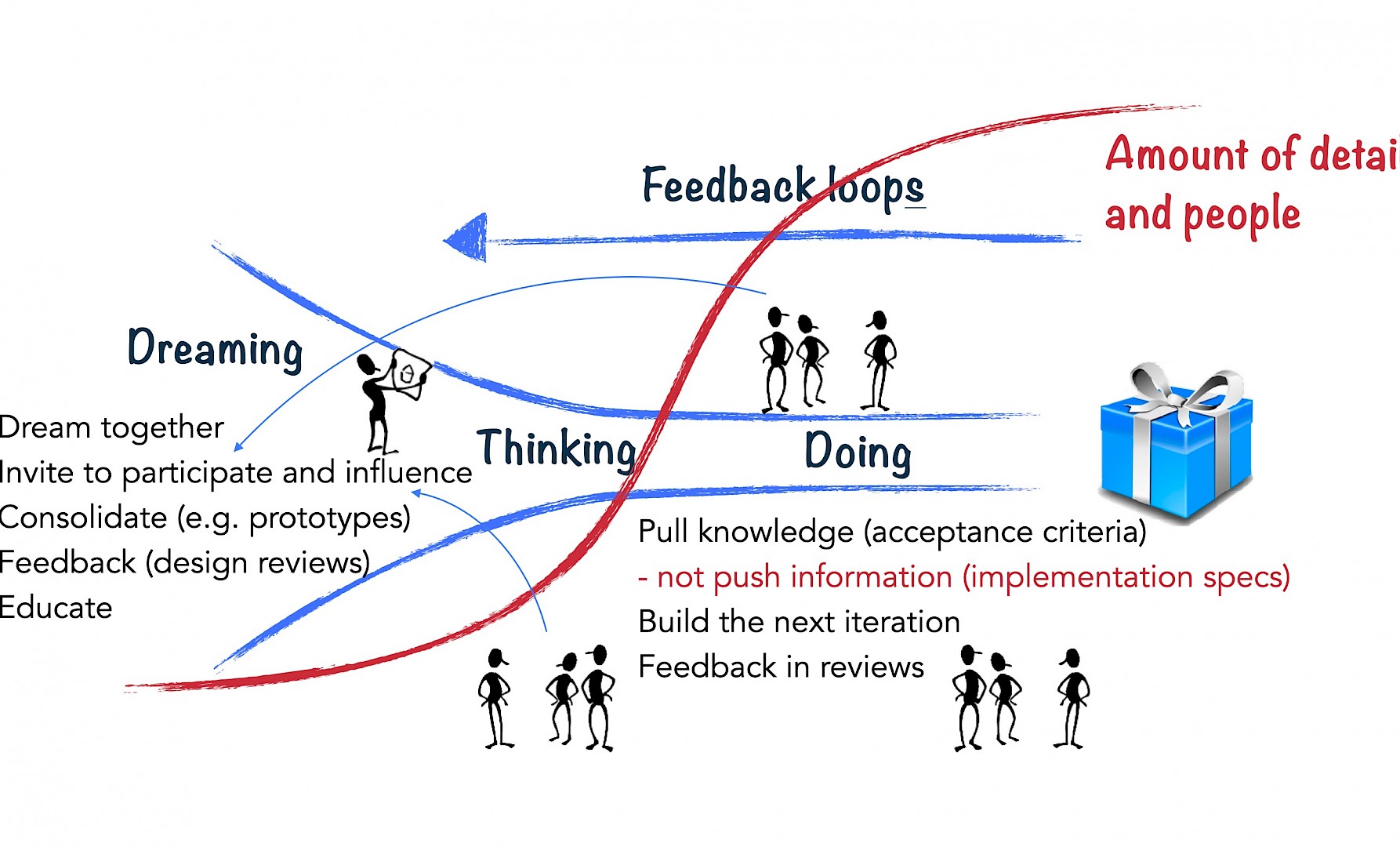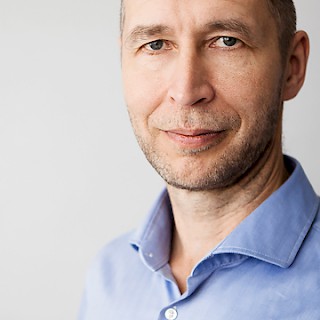Dreaming is essential, Thinking is difficult, Doing is tedious
21.10.2022 — Dreaming-thinking-doing is the natural process of doing anything, in small and large scale.

Coffee would be wonderful. Should I fetch it from a cafe, use the office machine, or mix it myself? Then I decide and act.
A family is dreaming of a new house. First parents talk about it and later involve kids. Then asking from friends and specialists, gradually consolidating to alternatives, decisions, and actions.
A new car model is first dreamed of by a small group of experienced specialists and decision-makers. Then a bigger but still closed group of designers builds models. Then the project goes into action by tens of thousands of people.
All these cases fit the process. This simple model is extremely powerful. For example:
- The model is easy to explain and sticks, becoming standard vocabulary. There is something that people immediately identify with.
- It creates the context for analyzing and explaining patterns when the official model is nonexistent, overcomplicated, or misleading. I remember drawing this picture on a post-it or a flipboard daily when consulting a huge product development organization.
- In a contract negotiation, I sketched dreaming-thinking-doing to get enough space for dreaming and thinking, reducing the pressure for too fast "results".
- Shared agreement with the model empowers a team under pressure, giving a fast reminder to make space for good work. "Good thinking - good products."
- It extends our image of product (and organizational) development far enough. We have the habit of demanding for practical, concrete, and fast results. So we talk about processes, models, data, decisions, backlogs, and other formal data. And we skip creating the fundamental understanding by dreaming together.
- People have a hunger for dreaming. Being invited to dream means ownership and relatedness, the strongest intrinsic motivator.
I feel disappointed and surprised, that I need to find such a basic thing myself. I have been involved with the Agile movement for two decades and no one explained this. I only remember a couple of hints. A waterfall process book "New product development" by PRTM consultants casually mentions the fuzzy front end before the stage gate development. And another about decision-making in retrospectives: first expanding thinking, then there is a groan zone, and finally narrowing to decisions. If you find sources, please let me know.
We gave a presentation about dreaming-thinking-doing at LeSS conference in Warsaw, and the following provides more about Dreaming.
Please follow this blog or my LinkedIn profile. I will post frequently about the practical and philosophical aspects:
- Tayloristic alienation: The fundamental antipattern where others dream, others think, and others do -
- The explosion of detail - the implementation perspective
- How to create the right conditions for dreaming, thinking, and doing
- Fragmented thinking
- The nature of different phases, and what it means to culture and collaboration
- What kind of Teamwork is needed at different phases
- ...

